How to grow courgettes / zucchini in containers
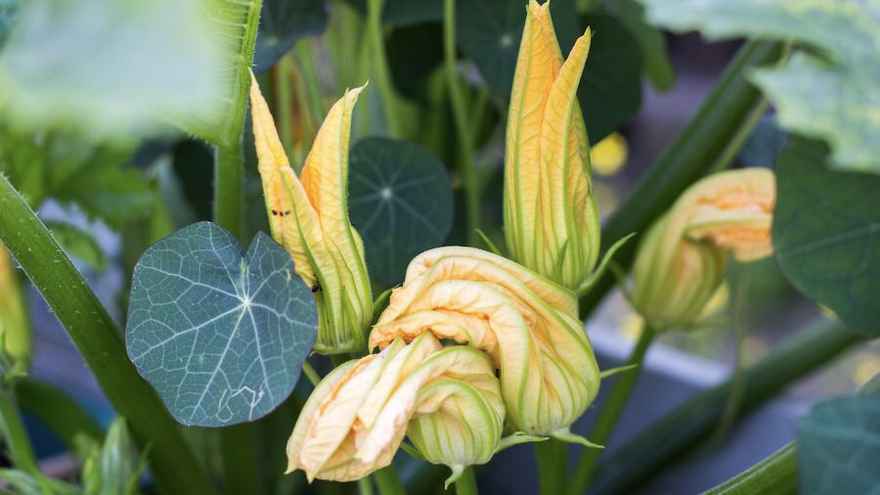
Courgettes / zucchini are productive and easy to grow in containers - and one plant will give you fruit for several weeks. Homegrown, they are firmer, less watery and with fuller flavour than shop bought. They do grow big and bushy and take up lots of space - for climbing alternatives see end of post. To do well they need a big pot, plenty of sun and feeding.
What size of pot?
Courgettes need big pots. 20 litres (4 gallons) is probably the smallest, 30 - 50 litres (6 - 10 gallons) is even better. An old recycling bin, a 'bag for life' or an old water tank is ideal.
How to grow courgettes / zucchini
- Plant seeds in small pots (1/2 to 1 litre) inside from late April to early June, and keep in a warm bright place. If on a windowsill, putting white paper or foil behind the plants will help reflect more light on to the plant.
- When the plant is a 4 - 6 inches (10 - 15cm tall) start moving it outside on warm sunny days. This will help acclimatise it to the outdoors (gardeners call it 'hardening off'). Remember to bring it in again at night. Young plants do not like wind so keep your plant inside on windy as well as cold days.
- Once the plant has filled the pot (when you see roots coming out of the bottom holes) it is time to move it into a bigger pot. If the threat of frost has passed (usually late May / early June in much of UK), you can move it outside into its final pot. If possible, avoid doing this on a windy or very hot day. Water well after moving it. (If it is too soon for the plant to go outside, you will need to move it into a slightly bigger pot inside.)
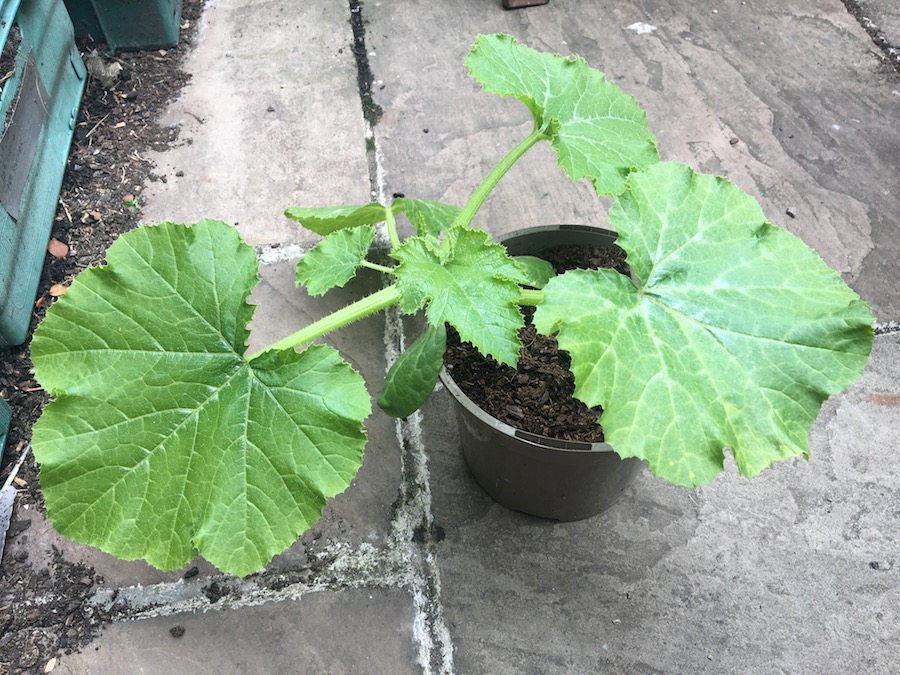 This courgette was started in this one litre pot - and is now ready to move into its final, big pot.
This courgette was started in this one litre pot - and is now ready to move into its final, big pot.
- You can grow courgettes in old, used potting mix / compost (they are not too fussy) but you need to mix in fertiliser first. Worm compost (if you have any) and / or a good handful of general purpose fertiliser like blood fish and bone will do nicely.
- Courgettes are hungry beasts - for water, food and sun. Put in a sunny place, (six hours plus a day), and keep well watered. Feed with liquid tomato feed once a week once it starts flowering.
- Courgettes produce male flowers (no fruits behind them) and female flowers (with fruits behind them). Sometimes they produce male flowers only for a few weeks before producing female flowers. The flowers are a delicacy and can be eaten stuffed or added to risottos or salads.
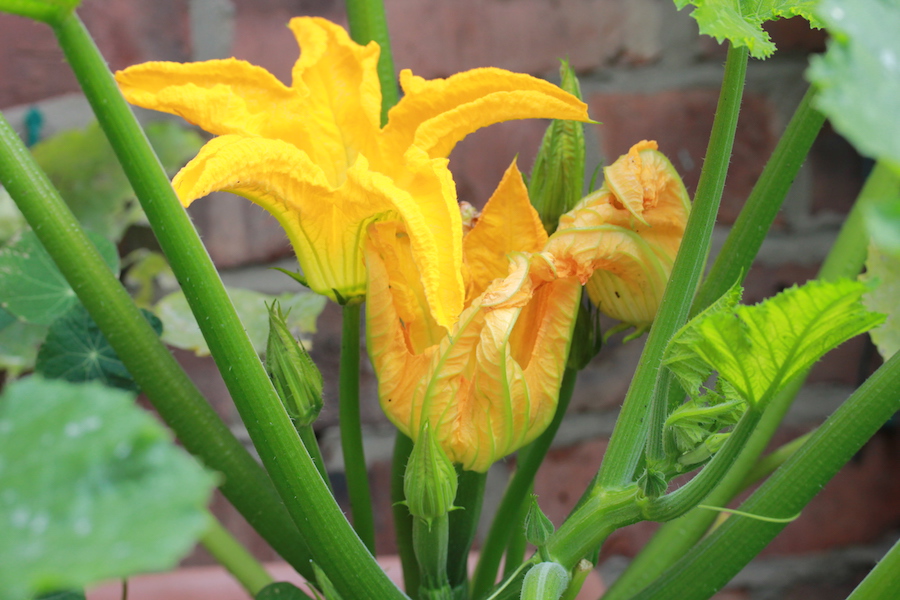 Male and female courgette flowers.
Male and female courgette flowers. - Picking the fruits small (and at their most tasty) will encourage the plant to produce more fruits.
- Courgettes will usually grow into BIG plants, and can start to overshadow plants nearby. To reduce this problem, it's ok to remove a few of the largest, oldest leaves without damaging the plant.
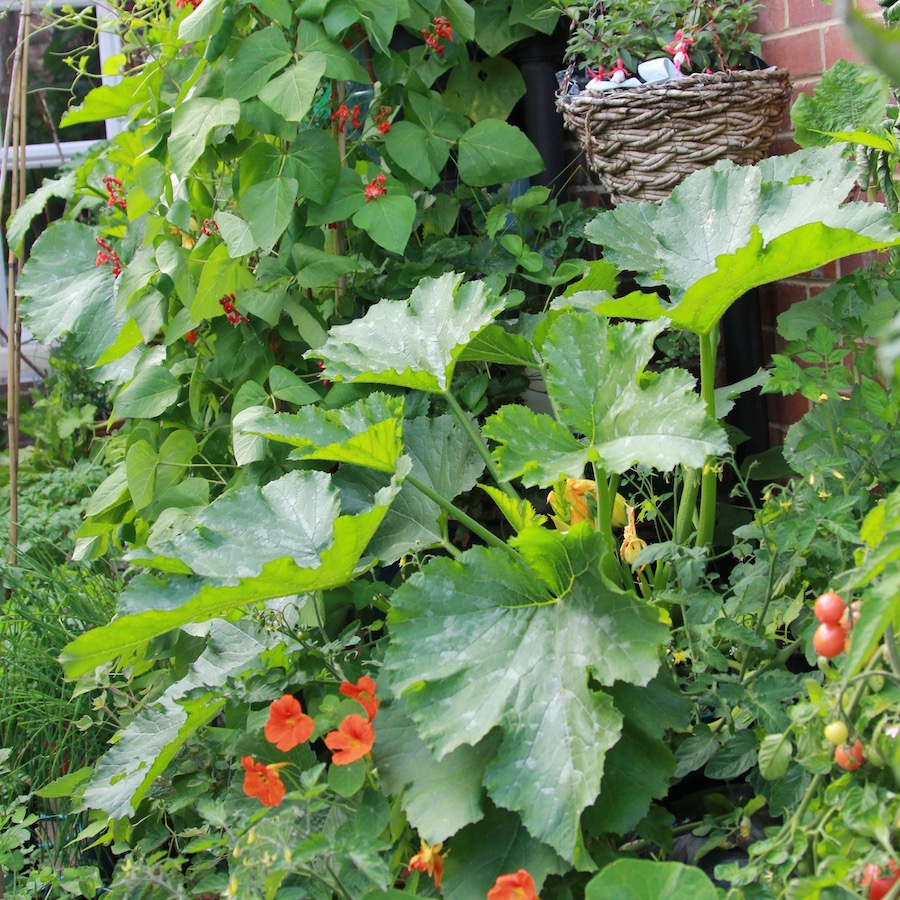 It grows big and bushy! A few large leaves can be cut back to reduce overshadowing of neighbours.
It grows big and bushy! A few large leaves can be cut back to reduce overshadowing of neighbours.
Common Problems
The most common problem in courgettes is mildew, a fungus that looks like white dust on the surface. It won't usually kill the plant but it will reduce its productivity. Removing the worst infected leaves can help slow the spread. Good watering can also help reduce the chance of plants getting mildew (it thrives in dry conditions).
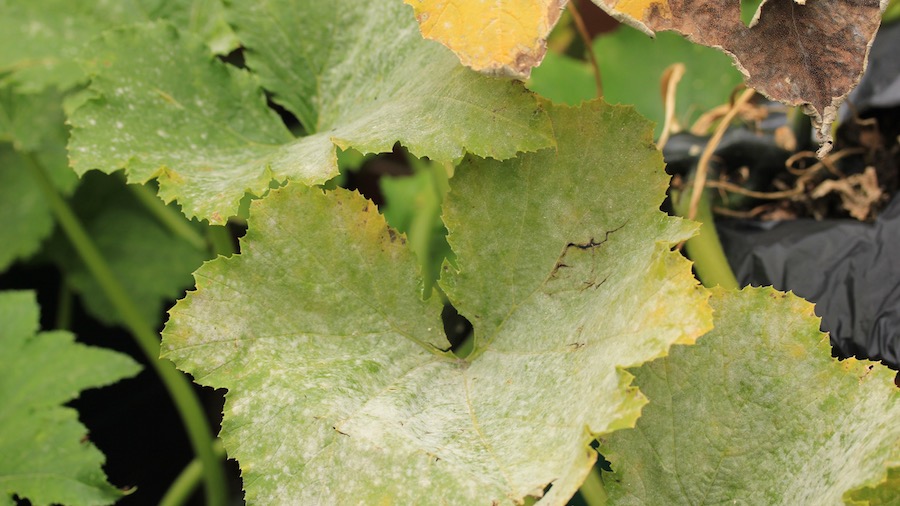 Mildew is a common problem - regular watering can help delay its onset.
Mildew is a common problem - regular watering can help delay its onset.
Climbing courgettes?
Because courgettes are big and bushy, they can take up a lot of room in a small space. Some websites show how they can be encouraged to climb. I've tried this and it's not as easy as it looks. An alternative solution is to grow tromba or tromboncino squash. This has a flavour similar to courgettes and is a vigorous climber. It's great for making the most of vertical spaces and also fun to grow. The squash can be eaten small like courgettes or left to grow a metre long!
 Tromba or tromboncino squash is an excellent climbing alternative to courgettes. Grow it the same way, and provide string or trellis for it climb up.
Tromba or tromboncino squash is an excellent climbing alternative to courgettes. Grow it the same way, and provide string or trellis for it climb up.
Your turn
I’d love to hear your tips for growing courgettes / zucchini in containers in the comments – and any varieties that you particularly like to grow?

30 comments
I love planting courgettes, but so far we've eaten precious little of them (over the last 6 years), as mildew usually kills our plants before they get to produce anything. We live in Spain, just outside Barcelona, and hot, dry conditions are the norm these days, starting in March. I will give them another go in a few large containers I've found beside the bins (they are communal here, not one for every house). As an anecdote, last summer an enormous pumkin plant grew spontaneously in an empty plot. It covered about 20 m2! We ate the male flowers in various preparations until well into November, until the first frost killed it. Every neighbour in the area had a chance to get some green pumkins or even the larger, orange ones. They weren't delicious - in fact they were rather tasteless, but they could be breaded and fried or used to bulk up a stir fry- , unlike the flowers which nobody else ate, but they were free and I think that alone made all of us quite happy.
I love your story of the rogue pumpkins! And so glad you made good use of the flowers - a delicacy. Yes, sadly, courgettes are more prone to mildew if they dry out. You could maybe also try to rig up some sort of simple DIY irrigation, too - perhaps a plastic bottle full of water with a small hole in the top. There are instructions online.
Leave a comment